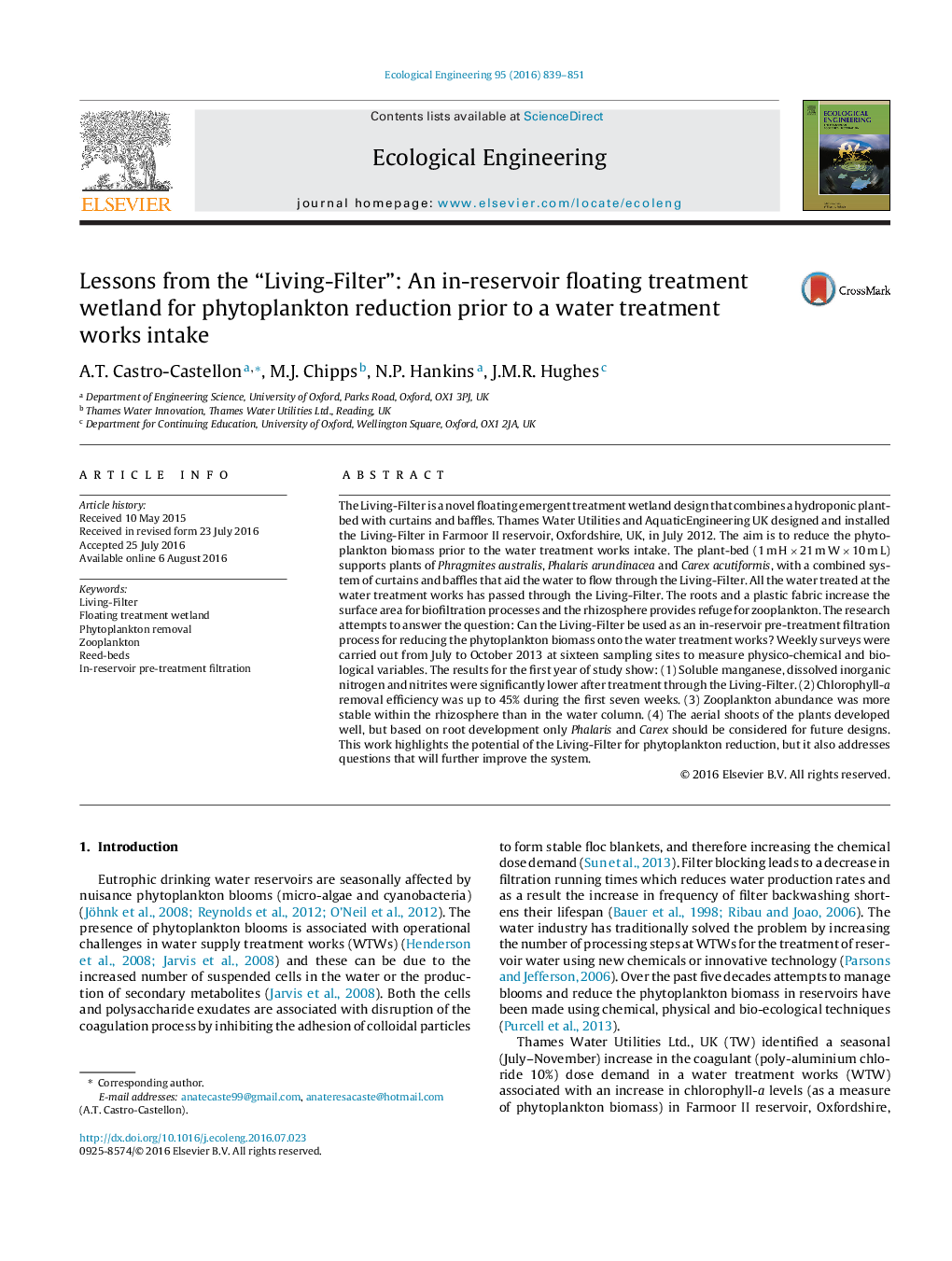| کد مقاله | کد نشریه | سال انتشار | مقاله انگلیسی | نسخه تمام متن |
|---|---|---|---|---|
| 4388515 | 1618004 | 2016 | 13 صفحه PDF | دانلود رایگان |
• Living-Filter reduces soluble manganese, dissolved inorganic nitrogen and nitrites.
• Chlorophyll-a efficiency removal is up to 45% during the first seven weeks.
• Zooplankton numbers are stable within the rhizosphere compared to the water column.
• Only Phalaris and Carex should be considered in future designs.
• The potential of the Living-Filter as a pre-treatment process has been demonstrated.
The Living-Filter is a novel floating emergent treatment wetland design that combines a hydroponic plant-bed with curtains and baffles. Thames Water Utilities and AquaticEngineering UK designed and installed the Living-Filter in Farmoor II reservoir, Oxfordshire, UK, in July 2012. The aim is to reduce the phytoplankton biomass prior to the water treatment works intake. The plant-bed (1 m H × 21 m W × 10 m L) supports plants of Phragmites australis, Phalaris arundinacea and Carex acutiformis, with a combined system of curtains and baffles that aid the water to flow through the Living-Filter. All the water treated at the water treatment works has passed through the Living-Filter. The roots and a plastic fabric increase the surface area for biofiltration processes and the rhizosphere provides refuge for zooplankton. The research attempts to answer the question: Can the Living-Filter be used as an in-reservoir pre-treatment filtration process for reducing the phytoplankton biomass onto the water treatment works? Weekly surveys were carried out from July to October 2013 at sixteen sampling sites to measure physico-chemical and biological variables. The results for the first year of study show: (1) Soluble manganese, dissolved inorganic nitrogen and nitrites were significantly lower after treatment through the Living-Filter. (2) Chlorophyll-a removal efficiency was up to 45% during the first seven weeks. (3) Zooplankton abundance was more stable within the rhizosphere than in the water column. (4) The aerial shoots of the plants developed well, but based on root development only Phalaris and Carex should be considered for future designs. This work highlights the potential of the Living-Filter for phytoplankton reduction, but it also addresses questions that will further improve the system.
Journal: Ecological Engineering - Volume 95, October 2016, Pages 839–851
